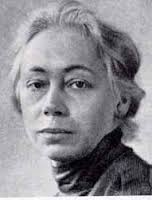Kathe Kollwitz (1867 -1945)
German graphic artist, drawer, painter and sculptor Käthe Kollwitz was born on July 8, 1867 in Königsberg by the name of Käthe Schmidt. Käthe

Kollwitz receives first art training from the painter Gustav Naujoks and the engraver Rudolf Mauer in Königsberg as early as in 1881. She marries Karl Kollwitz in 1891.
Käthe Kollwitz shows a continued interest in illustrations and printing techniques, she also executes her first etchings. Encountering works by Max Klinger leave a deep impression with her. In 1893 she picks up working on a graphic cycle on the topic "Ein Weberaufstand" (A Weaver's Revolution). The work impresses the jury of the "Große Berliner Kunstausstellung" (Great Berlin Art Exhibition) in 1896 so much that they award her the small gold medal. Max Lehrs, head of the Dresden print room, begins collecting works by Käthe Kollwitz the very same year. A first catalogue raisonné is published as early as in 1903.
Both her sons volunteer in World War I, her younger son dies in 1914 at the age of 18. The mourning of her son's death and the call for peace preoccupy the artist for several years. She also depicts her impressions war, hardships, starvation and miseries of the working class in her works in a very haunting manner.
Käthe Kollwitz becomes the first female member of the Prussian Academy of Arts in 1919 and is appointed professor, she is also given her own studio at the academy. She is forced to withdraw from the academy in 1933, because of her pacifist and political activities. The series of lithographs "Tod" (Death), comprising eight sheets, from 1934/35 express her deep resignation and her longing to die. She expresses her sorrow over her husband's death (1940) in the sculpture "Der Abschied" (Farewell) from 1940/41. She makes the lithograph "Saatfrüchte sollen nicht vermahlen werden" in 1942. Her studio is bombed a the next year. She is allowed to move to the Rüdenhof near Schloss Moritzburg by order of the Saxon prince Ernst Heinrich,in 1944 where she dies on April 22, 1945.
 Kollwitz receives first art training from the painter Gustav Naujoks and the engraver Rudolf Mauer in Königsberg as early as in 1881. She marries Karl Kollwitz in 1891.
Kollwitz receives first art training from the painter Gustav Naujoks and the engraver Rudolf Mauer in Königsberg as early as in 1881. She marries Karl Kollwitz in 1891.





 Facebook
Facebook Twitter
Twitter Subscribe us
Subscribe us Flickr
Flickr




